Cigar Spirits: Elmer T. Lee Single Barrel Straight Kentucky Bourbon
16 May 2013
Buffalo Trace is one of the most prolific bourbon makers in America. In addition to their eponymous bourbon, Buffalo Trace makes a range that includes the impossible-to-find Pappy Van Winkle; the slightly more available Special Reserve; the cutting-edge-turned-classic Blanton’s Single Barrel; the highly sought-after Antique Collection, including George T Stagg; and great values like Eagle Rare and W.L. Weller, among others.
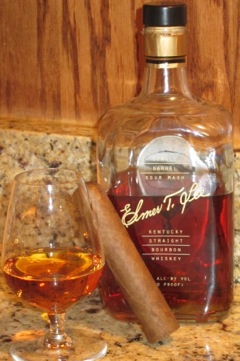 One Buffalo Trace bourbon that I had missed over the years was Elmer T. Lee, at least until last week. (Credit goes to David “Doc” Diaz of Stogie Fresh for speaking highly of it during one of the bourbon conversations on my recent Cigar Safari.) At his urging, I picked up a bottle for the reasonable price of $30.
One Buffalo Trace bourbon that I had missed over the years was Elmer T. Lee, at least until last week. (Credit goes to David “Doc” Diaz of Stogie Fresh for speaking highly of it during one of the bourbon conversations on my recent Cigar Safari.) At his urging, I picked up a bottle for the reasonable price of $30.
The single barrel selection is named in honor of longtime Buffalo Trace head distiller Elmer T. Lee. And while the now retired Lee goes by the title “Master Distiller Emeritus,” he still personally selects the barrels that go into his 90-proof, single barrel bourbon.
Elmer T. Lee, which comes in a classic-looking squat, square-ish bottle, pours a light copper color. The nose features a bit of oak with lots of sweetness including vanilla, rock candy, marshmallow, and tropical fruits.
On the palate you find a soft, easy drinking combination of vanilla, honey, and dried fruit. The finish shows hints at some woody spice but quickly tapers off, leaving you wanting more.
And that’s what I enjoy about this bourbon. It’s an easy sipper that’s balanced and rich. You’ll want to look for similar qualities in a cigar pairing. Herrera EstelÃ, PG Gourmet Series, La Aurora 107, L’Atelier, and Illusione Epernay are some of the cigars that fit the bill.
As for Elmer T. Lee, this seems like a definite addition to my permanent rotation. It’s 95% of the richness of Blanton’s at just 60% of the price, and certainly worthy of drinking straight. If you like bourbon but haven’t made a point of trying Elmer T. Lee, it’s highly advised that you pick some up. I’m certainly glad I did.
photo credit: Stogie Guys

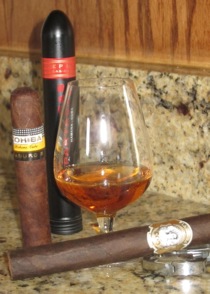 The result was
The result was 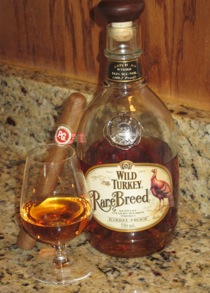 First, Rare Breed is bottled at barrel strength without being cut with water, resulting in a strong 108.4-proof whiskey. Second, the bourbon is a combination of 6, 8, and 12 year old Wild Turkey (the regular 101 variety used to carry an age statement of 8 years, but has since
First, Rare Breed is bottled at barrel strength without being cut with water, resulting in a strong 108.4-proof whiskey. Second, the bourbon is a combination of 6, 8, and 12 year old Wild Turkey (the regular 101 variety used to carry an age statement of 8 years, but has since 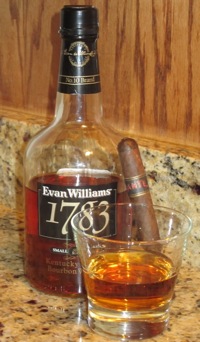 Just $15 will land you this bourbon from Heaven Hill Distillery which, in addition to Evan Williams and the eponymous Heaven Hill, also makes Elijah Craig, Old Fitzgerald, Larceny, and Parker’s Heritage, among others. Parker’s Heritage refers to Parker Beam (of the famous Beam bourbon family), master distiller at Heaven Hill along with his son, Craig. Since it’s founding in 1935, Heaven Hill has had a member of the Beam family as its master distiller.
Just $15 will land you this bourbon from Heaven Hill Distillery which, in addition to Evan Williams and the eponymous Heaven Hill, also makes Elijah Craig, Old Fitzgerald, Larceny, and Parker’s Heritage, among others. Parker’s Heritage refers to Parker Beam (of the famous Beam bourbon family), master distiller at Heaven Hill along with his son, Craig. Since it’s founding in 1935, Heaven Hill has had a member of the Beam family as its master distiller.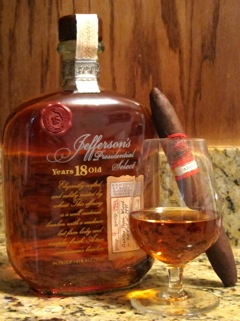 And even though they run around $100 apiece, I’d probably pick up a few more if I came across them. So while it’s an understatement to say I’m a fan of this bourbon, that’s not the whole reason why I always do a quick scan for “JPS 18” in a liquor store.
And even though they run around $100 apiece, I’d probably pick up a few more if I came across them. So while it’s an understatement to say I’m a fan of this bourbon, that’s not the whole reason why I always do a quick scan for “JPS 18” in a liquor store.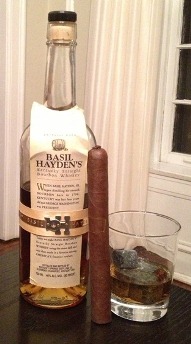 I like my colleague’s list, but one addition immediately came to mind: Basil Hayden’s. Maker’s is known for a smooth taste that emphasizes sweetness over spice. Likewise, Basil Hayden’s has built a reputation as an approachable bourbon with crispness over heat. So it stands to reason that many Maker’s fans might also like Basil Hayden’s, which is sold at a comparable cost ($35-40 per 750 ml. bottle).
I like my colleague’s list, but one addition immediately came to mind: Basil Hayden’s. Maker’s is known for a smooth taste that emphasizes sweetness over spice. Likewise, Basil Hayden’s has built a reputation as an approachable bourbon with crispness over heat. So it stands to reason that many Maker’s fans might also like Basil Hayden’s, which is sold at a comparable cost ($35-40 per 750 ml. bottle).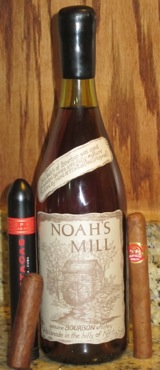 Further, while for many years Noah’s Mill held an age statement of 15 years (meaning the youngest bourbon in the bottle was at least 15 years old), the bourbon recently eliminated its age statement. Multiple reports I’ve read (including
Further, while for many years Noah’s Mill held an age statement of 15 years (meaning the youngest bourbon in the bottle was at least 15 years old), the bourbon recently eliminated its age statement. Multiple reports I’ve read (including  Patrick Ashby
Co-Founder & Editor in Chief
Patrick Ashby
Co-Founder & Editor in Chief Patrick Semmens
Co-Founder & Publisher
Patrick Semmens
Co-Founder & Publisher George Edmonson
Tampa Bureau Chief
George Edmonson
Tampa Bureau Chief